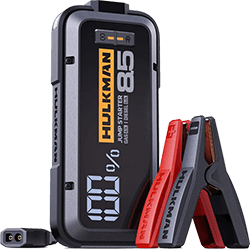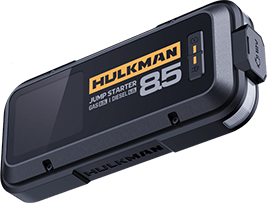Recent Articles
-
Mapping America’s Solar Landscape: Regional and Seasonal Variations November 11, 2025
-
Why Solva Solar Panels Stand Out: From Consumer’s Comment November 06, 2025
-
Unleashing Solar Power: Tips for Using and Maintaining Portable Solar Panels November 03, 2025
Featured Products
note
Common Operational Modes of Portable Power Stations — And Why Hulkman Mega Stands Out
Portable power stations have evolved into flexible energy hubs. Their ability to switch operating modes manually or automatically is at the heart of adapting to different scenarios: from maximizing runtime (endurance optimization) to boosting performance (fast charge), safeguarding during outages (emergency UPS/EPS), and enhancing user experience with specialized modes (silent, bypass, energy scheduling). Leading brands design differentiated mode suites; among them, Hulkman Mega distinguishes itself through intuitive mode handling and deep integration.
In this article, we’ll walk through typical user modes in portable power stations, compare how brands implement them, and explain how Hulkman Mega’s strategy places it as a multi-scenario leader.
In this article, we’ll cover:
- Eco / Energy-Saving Mode: Extending Runtime with Smart Throttling
- Fast / High-Speed Charging Mode: Unlocking Protocols Rapidly
- EPS / UPS Mode: Seamless Power Switching in Emergencies
- Advanced or Specialty Modes: Covering Edge Scenarios
- Strategic Comparison: Hulkman Mega vs. Generic Feature Sets
- Real User Insights & Caveats from the Market
- How to Choose for Your Use Case — Mode Strategy as a Filter
- Conclusion: Modes Are the New Must-Have Metric
Eco / Energy-Saving Mode: Extending Runtime with Smart Throttling
The Energy-Saving or Eco Mode is a low-power operational state that users activate manually or via app. It optimizes circuit behavior and limits output to reduce standby losses. In field use—especially overnight camping—Eco Mode is a lifesaver.
EcoFlow ties energy saving to its App: when turned on, AC output is capped to 1200 W, idle USB ports are shut off, and standby drops from ~2 W to ~0.5 W.
Jackery doesn’t label “Eco Mode”, but users can manually disable AC outputs: long-pressing the AC button removes AC draw, reducing standby by ~40%.
Bluetti combines “Eco Mode + zone control”: once activated via button or app, it caps output (e.g. 800 W) and disables idle ports. Their AC180 model reports standby as low as 11 W in this mode.
Hulkman Mega’s approach is more user-centric: Eco Mode is default on when shipped. If only low-power devices or none are connected, it automatically enters a self-sleep state to eliminate wasted drain. Users can toggle Eco Mode via dual button hold (power + lamp) or control through the app. If UPS mode is engaged, Hulkman temporarily suspends Eco Mode to prioritize smooth switchover. This intelligent interplay ensures both energy savings and reliable backup functionality.
Pro Tip: When using devices ≤10 W (e.g. LED lights), it’s best to manually turn off Eco Mode to avoid auto sleep or toggling.
Fast / High-Speed Charging Mode: Unlocking Protocols Rapidly
Fast charge mode lets users manually engage PD, QC, or proprietary protocols for higher power output. This helps when rapid recharging is essential.
EcoFlow RIVER / DELTA line employ “X-Stream” fast charge. Users long-press a “Fast Charge” key. USB-C output can jump from 60 W to 100 W, and high-end models support dual PD channels.
Anker PowerHouse 767 uses “Boost Mode”: upon long-pressing, it temporarily boosts USB-C from 100 W to 140 W, then auto-reverts for safety.
Bluetti emphasizes solar fast charge combined with dual-invert capabilities. Their USB-C ports default to 60 W but can be unlocked to 100 W via firmware/app toggle.
Hulkman Mega’s Fast Mode is built for simplicity and safety. In Turbo mode, users can drive devices above 600 W in emergencies—ideal for portable heaters or power tools. This is enabled via the app and is limited to 600 W to prevent over-stress. Hulkman’s firmware also blocks Turbo Mode on sensitive devices like medical equipment unless the user expressly overrides the default. Its one-touch app switching strikes a balance between performance and safety.
EPS / UPS Mode: Seamless Power Switching in Emergencies
EPS (Emergency Power Supply) or UPS (Uninterruptible Power Supply) mode is what lets the power station handle sudden outages by switching to battery power with minimal interruption.
EcoFlow values fast switching: in EPS mode, their units can react in ~30 ms when grid power cuts, maintaining operation continuity for fridges, routers, and light loads.
Anker / other brands’ UGC warn about UPS edge cases:
“When the power resumes, AC outlets bypass the battery while it charges… the unit doesn’t always resume output automatically after an outage.”(Reddit)
This highlights the importance of seamless logic in power path control.
Bluetti AC2P users report cycle quirks:
“In UPS mode … every few minutes the station discharges to 99%, then recharges to 100%, causing internal cycling stress.”(BLUETTI Community)
Hulkman Mega’s UPS Mode is built to deliver reliable switching: within 15 ms, it transitions to battery power. Though not 0 ms, this is sufficient for most home electronics. Mode toggling is handled via app, avoiding physical buttons. To protect battery life, Hulkman recommends capping charging in UPS mode at 80 % SOC—especially when powering multiple AC devices. It also prompts the user to limit loads during UPS mode to prevent overshoot or data loss.
Advanced or Specialty Modes: Covering Edge Scenarios
Beyond the foundational modes, premium power stations provide specialty functions to address discreet pain points:
Silent Mode / Low Noise: Useful for bedrooms, studios, or campsites. EcoFlow’s “X-Quiet” mode throttles fan speed to ~30 dB even under significant output loads. Jackery offers a "Silence” setting to reduce noise.
Turbo / High-Power Boost Mode: Temporarily overrides standard limits for surge loads, often capped in duration to protect battery health.
Smart Energy Scheduling / TOU (Time-of-Use): Enables charging during low power cost hours, discharging during peak hours, or integrating solar management algorithms.
Modular / Expandable Mode: Bluetti supports adding external battery packs to increase capacity or power — toggled via app/firmware.
Bypass Mode (Hulkman Exclusive): When grid power is present, Bypass Mode allows concurrent output while charging. External devices see clean AC (voltage/frequency matched to grid), with a max 8A current cap. This model ensures no interruption when charging and discharging simultaneously—ideal for home or office environments.
By contrast, many competitors require active toggling or cannot safely supply full AC output in pass-through mode.
Strategic Comparison: Hulkman Mega vs. Generic Feature Sets
When evaluating power stations across brands, buyers often focus on headline specs: watt-hours, surge wattage, or port count. But mode flexibility and transition intelligence make real-world difference in usability.
Hulkman Mega excels in:
Default Eco Mode: Most units ship with energy-saving behavior out-of-box, preventing user neglect from draining standby losses.
Seamless UPS / Mode Interlock: Eco, Turbo, and UPS modes interlock intelligently—activating one disables conflicting modes automatically.
Bypass Mode with grid consistency: External loads see consistent AC, even while charging—unlike many units that drop or reconfigure voltage paths mid-charge.
App-first mode control: Users can toggle all modes remotely, with preset safety limits (e.g. 80 % cap in UPS).
Scenario targeting: Modes map to clear user needs (e.g. camping, emergency, home backup), reducing the cognitive load for non-engineer users.
Rather than designing modes first and patching user flow, Hulkman built user-need-first mode logic, which combines power station flexibility with those real-life use cases (camping, office, outages).
Real User Insights & Caveats from the Market
On DIY Solar Forums, users have reported UPS mode issues:
"Power station UPS mode fails because they don't restart after discharging to zero, and 'AC always on' was removed.”(DIY Solar Forum)
This underscores how mode implementation quality impacts utility in survivability.
On Reddit in an Anker discussion:
"When the power resumes, then the AC outlets bypass the battery … the station doesn’t always resume output automatically.”(Reddit)
Because many power stations operate in pass-through mode, they may disable or mis-handle return-to-grid logic.
Bluetti AC2P users observe small cycles in UPS mode: the battery drops 1 %, the unit recharges—a behavior some worry could affect battery life.
Hulkman anticipates this by limiting mode override thresholds and balancing logic.
In industrial UPS discussions, bypass switching is discussed as both a protective fallback and potential risk if misconfigured. (Eng-Tips)
These real-world examples show that mode design and fault recovery logic matter more than marketing glitz.
How to Choose for Your Use Case — Mode Strategy as a Filter
When comparing power stations, evaluating mode capability is as critical as watt-hour specs:
- Camping / Off-grid → Rich Eco and Turbo modes, self-sleep, adaptive fast charging
- Home backup → Reliable UPS + Bypass mode, fast transition, remote toggling
- Hybrid (home + travel) → Modular expansion, energy scheduling, seamless mode shifts
- Critical devices (lab / media) → Always-on UPS with clean switching logic, deterministic latency
Hulkman Mega is positioned to satisfy all segments—users don’t need multiple devices or mode-limited compromises.
Conclusion: Modes Are the New Must-Have Metric
Portable power stations are competing on functional richness now—not just capacity. The following guidelines summarize mode importance:
- Energy saving / Eco mode = extended runtime
- Fast mode = rapid recharge
- UPS/EPS mode = critical failover
- Silent / Turbo / scheduling / modular / bypass = scenario-specific optimization
Seamless transitions and smart interlock logic differentiate premium devices
Hulkman Mega’s mode architecture—backed by app control, user-first defaults, bypass support, and intuitive logic—makes it a standout in real-world use. While many competitors offer similar mode names, few integrate mode transitions so gracefully across user scenarios.
In your purchase decision, don’t judge a power station only by watt-hours: evaluate the mode experience, failover consistency, and intelligent automation. That’s the strategic edge that positions Hulkman Mega as the most adaptable, trustworthy choice for both adventurous off-grid use and mission-critical emergency support.
Learn more and use exclusive code “TNZG4NC7” to get 25% discount at checkout.






















